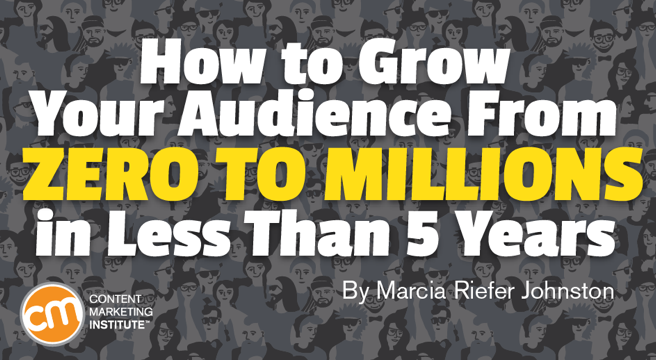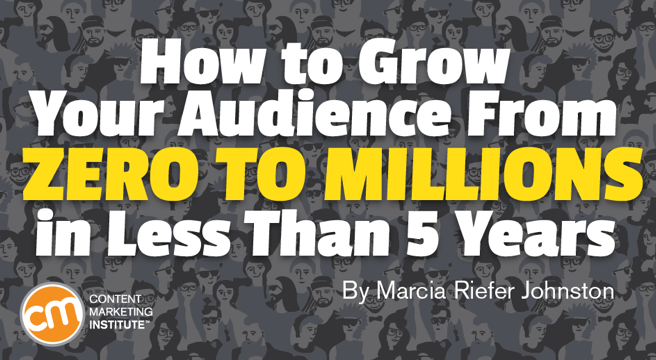What is Quartz? To give you a sense of the magnitude of that reach, here are some metrics as of January 2018 – five and a half years after the company got its start: 20 million visitors to qz.com 700,000 subscribers to the Quartz newsletters 800,000 downloads since February 2016 app launch 5 million readers through news aggregation platforms 3 million followers on social media 155 million unique people watching Quartz videos on Facebook More important than how many people they reach is whom they reach, Jay says. Design with your audience in mind Since Quartz researchers found that executives throughout the world (its audience) consume news more on phones than on desktops, Quartz designs for mobile devices first and desktop second. On the x-axis is the length of the piece. As Jay says, “It is not rewarded with the thing we’re all after with content marketing, which is word-of-mouth writ large, the attempt to share and engage with that content in a meaningful way.” Quartz goes left or right on the curve. They’ll share that.” On the right side of the curve (long form), content is the most likely shared by the executive audience, Jay says. “We make big decisions with our gut,” Jay says, “and little decisions with data.” People on the content team use their intuition to create stories they think their audience will find engaging, interesting, and unique. After it published the app, the team “got really interested in the data,” Jay says. You could do worse than mimic what worked for the news team at Quartz: Design with your audience in mind. Has your team done some of these things?

You’ve just been hired. Your boss comes to you and says, “We want millions of people regularly viewing our content within the next five years. Go.”
You make it happen.
Riiiiight.
Well, Jay Lauf, co-president and publisher of Quartz, made this happen with his team. He told the story of how they did it in his Content Marketing World talk, Deconstructing Quartz (QZ.com): How One of the Most Popular Mobile Destinations Grows Audience, Extends Reach in Digital, and Creates a Superior Content Experience.
If your brand is trying to build an audience for your content, you can learn from the Quartz team’s experience. Think of your content team as a media company within your company.
What is Quartz?
A news company owned by Atlantic Media, Quartz launched in September 2012 with the website qz.com. The founding team members came from news organizations, including Bloomberg, The Wall Street Journal, The Economist, and The New York Times. These folks create content people want.
Also contributing to Quartz’s audience-building success:
- The company continually grows its content team – 150 journalists on five continents.
- The content is all digital.
- The content is designed first for tablets and phones.
- After establishing a following on its website, Quartz added ways to distribute its stories: an email newsletter, an app, and social media (Facebook, Twitter, LinkedIn, YouTube).
- The content lends itself to aggregation by news platforms, such as Apple News, Flipboard, and Google Newsstand thanks to the versatility and insight of the reporting as well as the design of Quartz’s products.

Rapid growth
While it’s impossible to pinpoint the number of people who regularly consume Quartz news via all these channels, Jay estimates the company accrued 100 million regular viewers in its first four and a half years.
To give you a sense of the magnitude of that reach, here are some metrics as of January 2018 – five and a half years after the company got its start:
- 20 million visitors to qz.com
- 700,000 subscribers to the Quartz newsletters
- 800,000 downloads since February 2016 app launch
- 5 million readers through news aggregation platforms
- 3 million followers on social media
- 155 million unique people watching Quartz videos on Facebook
More important than how many people they reach is whom they reach, Jay says. The audience is business decision-makers. “We’re at parity with all the bellwethers – The Wall Street Journal, Financial Times, The Economist, Bloomberg, Fortune, Forbes – but with a younger audience: median age around 40 and majority female. We’re attracting the right kind of audience for what we’re trying to do both journalistically and as a business.”
To what does Jay attribute this kind of success? What did Quartz do that the rest of us might want to copy?
For starters, it tells stories that people “freaking love,” as expressed in comments like this tweet (raving about how the random motions of a lava lamp can be used to encrypt digital data and other things you never realized you wanted to know about lava lamps):

There’s so much to say about the quality of Quartz content that I’m working on another post on that topic alone – stay tuned!
Meanwhile, here are some other tips from Jay, which the rest of this post details:
- Design with your audience in mind.
- Find your sweet spots for content length.
- Use third-party platforms to your advantage (but don’t depend on them).
- Make big decisions with your gut, small decisions with data.
Design with your audience in mind
Since Quartz researchers found that executives throughout the world (its audience) consume news more on phones than on desktops, Quartz designs for mobile devices first and desktop second. “These are deeply intimate devices on which people are now consuming content, so there’s a great opportunity to engage them,” Jay says.

Because Quartz launched in “the age of acceleration,” Jay says, quoting Thomas Friedman, it owes some of its success to being “unshackled” from a lot of the considerations traditional publishers have had. “A lot of publishers have to wrestle with how to port their print content into a digital environment, never mind trying to figure out how to take the desktop expression of what you’ve done and fit that into a mobile environment. We had the luxury of starting from scratch,” Jay says.
He…

COMMENTS